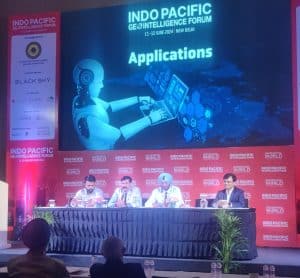The Fast-Moving Consumer Goods (FMCG) industry has transformed considerably over the turn of the millennium. Consumers’ preferences have changed and so has the supply and demand pattern. FMCG industry over the years has experienced a digital revolution after embracing automation.
Contrary to popular belief the automation does not start at the warehouse but the fields itself. When we think of agricultural robots, we tend to picture things that pick or apply chemicals but there are robots now that can do much more.
Automation from Fields
Robots are used to check crops for issues while autonomously travelling the fields. They move along on rimless open-spoked wheels in order to lessen damage to crops as it moves through the field. Once the perimeter coordinates on the field are marked, the robot uses on-board GNSS (global navigation satellite system) module to determine where it’s located relative to those boundaries.
Two cameras are used and the images are processed in near-real-time via AI-based algorithms. Users are alerted to the presence and location of problems such as weeds, diseases and pest damage. They’re also notified if more fertilizer or water is required.
An example of this would be the SentiV robot designed and created by French Robotics Start-up Meropy shown in the picture below.
From the fields then comes the production line that is an expensive process that only larger enterprises can afford.
Collaborative Robots or Cobots
Advancements in technology has made it possible for enterprises to introduce collaborative robots or cobots to the factory floor. Unlike industrial robots, cobots are economical, space-saving and safe to be used within human settings. These user-friendly cobots are offer partial automation in the manufacturing processes, an inexpensive option for small and mid-sized enterprises.
In addition, the deployment of cobots does not require major changes in infrastructure. The cobots were deployed in great numbers during the pandemic when the manufacturing industry was hit leading to disruption in the supply chain.
These companies were under great pressure to improve and optimise their business operations to meet the production requirements as well as to remain competitive in the market. Adoption of robotics and automation across the industry helped manufacturers to ensure business resilience in the sector.
Challenges that Cobots and Automation address
The FMCG industry face various trials such as reduced efficiency in labour due to mundane and repetitive tasks in activities like packaging, palletising, logistics and warehousing and weight lifting and many more. The application of robotics and automation has made these tasks easy and efficient. In the FMCG sector, applications of robotics and automation include:
Packaging and Palletising
Lifting heavy loads and bending to pick up or wrap goods are non-ergonomic tasks at times lead to human error as attention spans decline. Cobots are programmed to work on repetitive tasks to relieve workers from performing mundane and tedious tasks by increasing the production rate on the factory floor. The application of cobots decreases the fatigue in the workers leaving them free to work on higher-value tasks.
Warehousing
Cobots are lightweight and flexible that ensure that goods are transferred at a consistent or even faster pace. Additionally, major infrastructure changes are not required in order to automate the manufacturing unit. Automation has reduced the cost of production and increased efficiency among the workers.
Inventory control
Cobots are now equipped with sensors to allow manufacturers to scan inventory and identify the space required for the storage of goods. This creates a more efficient space and eliminates the risk of breakage or wastage.
Product customisation
Traditional industrial robots are often designed to perform a particular task and require robot experts for any programming changes. Whereas cobots are flexible and can be redeployed to perform a variety of tasks without the need for professional engineers.
Robotics and automation have reduced the labour-intensive part of the FMCG sector. Here there is a perfect man-machine collaboration with likely opportunities to open up in the future.









